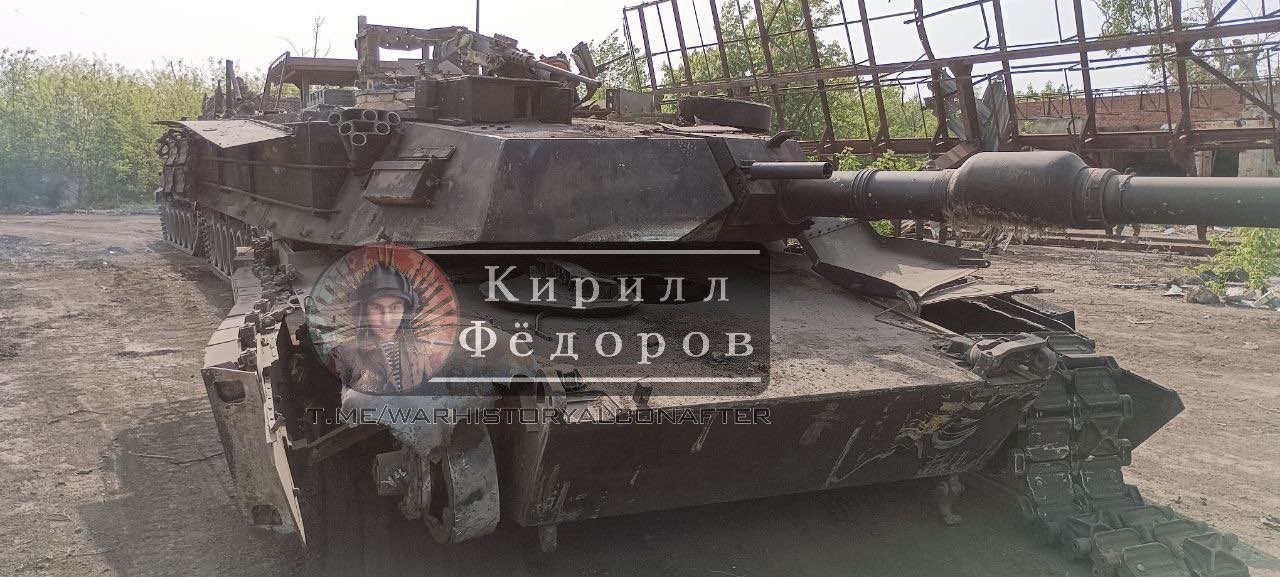“Significant Issues” with American M1A1 Abrams Tanks in Ukraine Anticipated Early On
According to the renowned U.S. media outlet Forbes, the M1A1 Abrams main battle tanks provided by the United States to Ukraine face significant issues that render them unsuitable for use on the battlefields of Eastern Europe, especially during the extended and harsh winter season.
(DEFENCE SECURITY ASIA) — In April, the United States was compelled to withdraw the M1A1 Abrams tanks it had donated to Ukraine from the front lines due to intense threats from Russian suicide drones, FPV and Lancet.
According to U.S. military officials speaking to The Associated Press, these tanks could not operate on the battlefield without being relentlessly targeted and destroyed by Russian drones.
Out of the 31 Abrams tanks supplied by the U.S. to Ukraine, five have been confirmed destroyed by Russian forces to date.
The U.S. provided these 31 Abrams tanks, each valued at $10 million (RM45 million), to Ukraine in January last year to aid in countering Russian armored attacks.
However, the dynamics on the Ukrainian battlefield have significantly shifted since the arrival of the Abrams tanks.

Russian reconnaissance and suicide drones pose a substantial threat to the American tanks, making it exceedingly difficult for Ukraine to protect them.
The pervasive threat from these Russian drones means “there are no open and vast areas where the Abrams tanks can move undetected,” stated a military official.
In fact, many military analysts had predicted that the Abrams tanks were not suitable for frontline operations in Ukraine.
They cited the terrain and the Ukrainian forces’ lack of experience with such complex machinery as major challenges.
According to these analysts, the Abrams tank is a “high-maintenance” vehicle that requires meticulous upkeep to remain operational over extended periods without issues.
Traditionally equipped with rugged Russian military gear that demands minimal maintenance, the Ukrainian forces lack experience with Western-made weaponry, which necessitates extensive maintenance.

Renowned U.S. media outlet Forbes reported that the Abrams tanks supplied to Ukraine face significant issues that render them unfit for the Eastern European battlefield, particularly during the harsh winter months.
The tanks struggle in muddy conditions, not due to their weight of 68 tons, but because of their filtration system that prevents debris from being sucked into the tank.
Forbes also noted that the Abrams’ 1,500-horsepower gas turbine engine is protected by large filters requiring continuous cleaning and maintenance.
The U.S. Department of Defense or the Pentagon had initially opposed supplying Abrams tanks to Ukraine, citing complex maintenance and logistics issues compared to European tanks.
However, after significant pressure from Ukraine, President Joe Biden’s administration decided to supply the tanks to help Ukraine counter Russian armored units.
Forbes further reported that the engine filters on the Abrams tanks need to be cleaned every 12 hours.

Failure to do so risks severe damage to the engine and transmission system.
Damaged Abrams tanks can only be repaired after their bodies are removed at specialized facilities, which are currently located in Poland.
This means that damaged tanks must be transported from the battlefields in Ukraine to Poland, a considerable distance from the front lines.
Cleaning the filters of the Abrams tanks is a complex process that must be done twice daily, where the system is activated to expel air from the turbine engine through the filters located at the back of the tank.
According to Forbes, operating the Abrams tanks is not straightforward as one imagine.
As early as September last year, Ukrainian military officials warned that the American-made tanks, weighing 70 tons, might not “last long” on the battlefield.

Moreover, the Abrams tanks supplied to Ukraine are the older M1A1 variant, which lacks the “depleted uranium” armor and advanced capabilities of the newer M1A2 model.
As evidenced in Iraq, the M1A1 Abrams tanks can be defeated by basic, outdated anti-tank weapons.
Lt. Gen. Kirill Budanov, head of the Ukrainian Military Intelligence Directorate, stated that the operational lifespan of the Abrams tanks in the country would be extremely limited if these ground assets are deployed recklessly on the front lines.
“If the Abrams tanks are used on the front lines or as part of a combat scenario, their time on the battlefield may be limited and short-lived,” he said. — DSA



Comments are closed.